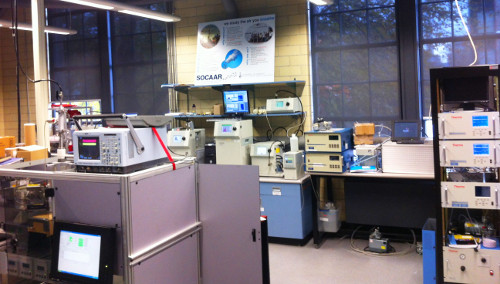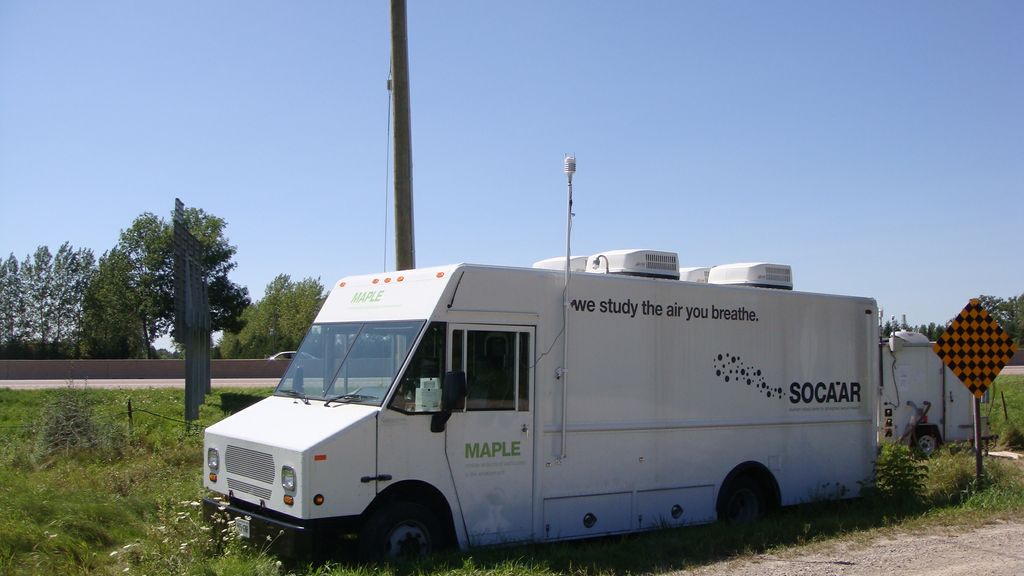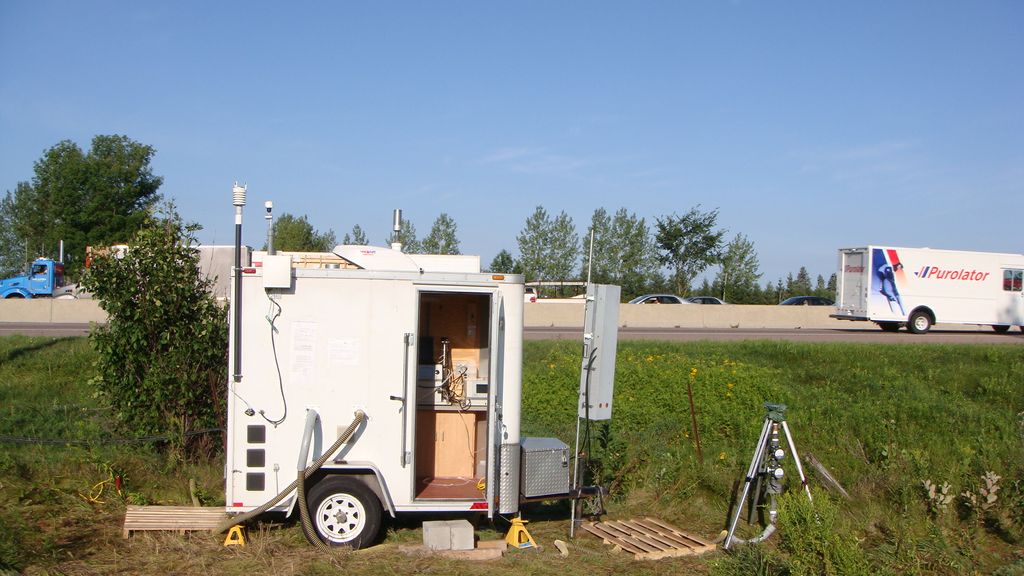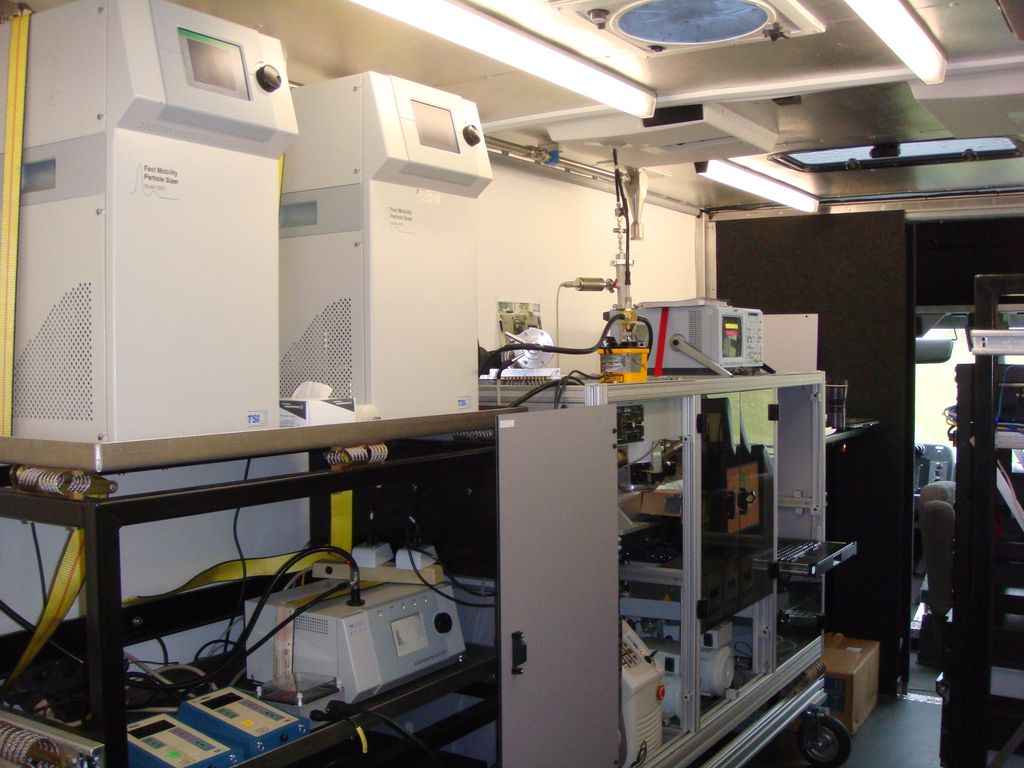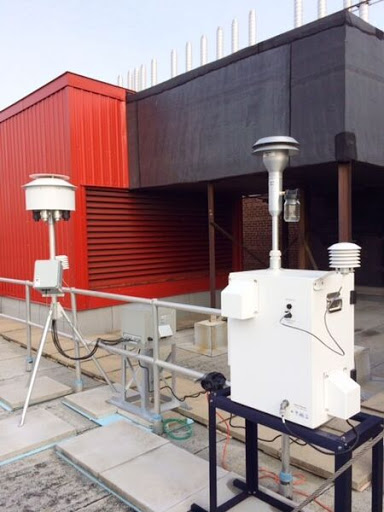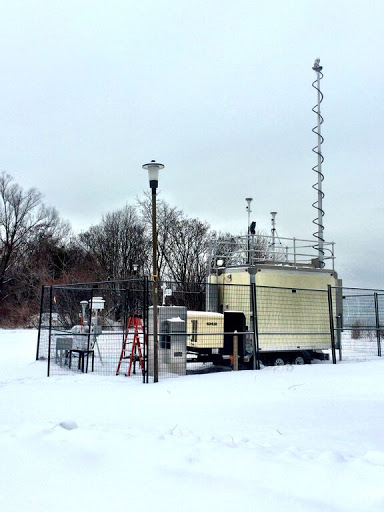The Evans Research Group operates the Field Measurement Facility, Maple Facility, Rooftop Measurement Site, Toronto Island Monitoring Station, and also works with the the Aerosols Chemistry Facility and the Concentrated Ambient Particle Exposure Facility.
Field Measurement Facility
The Field Measurement Facility is equipped with state-of-the-art instrumentation capable of characterizing aerosols according to size and composition. Research in this facility aims to study the spatial and temporal variation of aerosol properties, as well as identify sources of urban aerosol production. It is located in the University of Toronto’s Wallberg Building, and samples air directly from the north side of 200 College Street.
Ambient air is supplied to the instruments through a dedicated 10 cm diameter duct system, drawn at 2m/s by a blower that exhausts through the roof of the building. Each instrument samples a small fraction of this flow of outside air through a connection to the duct located immediately above the instrument. These ducts are well insulated to minimize any temperature changes during transport to the instrumentation and line losses are less than 10%.
MAPLE
MAPLE (Mobile Analysis of ParticuLate in the Environment) is a mobile sampling vehicle capable of measuring the spatial and temporal variations of ambient aerosol characteristics. MAPLE’s mobile sampling platform is advantageous because it can provide a large pool of information about a designated geographical range, rather than stationary facilities, which only rely on a few locations. MAPLE can also be used to study atmospheric processes, map concentration distributions of aerosols, and determine the composition of emission sources and their influence on local and regional air quality. This being said, MAPLE can take a snapshot of a region’s atmospheric chemistry, so that aerosol production and dispersion in Southern Ontario can be better understood.
MAPLE is a 24-ft long step van equipped with a suite of rapid-response instruments having sufficient sensitivity and specificity to quantify aerosol size and composition in the ambient atmosphere. The following instruments were borrowed from SOCAAR’s Field Measurement Facility, and are found on board MAPLE: an Aerosol Time-of-Flight Mass Spectrometer (ATOMS), a Fast Mobility Particle Sizer (FMPS), an Aerosol Mass Spectrometer (AMS), a Scanning Mobility Particle Sizer (SMPS), an Organic Carbon/Elemental Carbon Aerosol Analyzer (OCEC), a Proton Transfer Reaction Mass Spectrometer (PTRMS), and Gas analyzers for SO2, NOx, and O3. A 15 kW generator is used to power all instrumentation, while a sampling port on the top of the vehicle permits air samples to be taken when stationary or in motion. MAPLE, complete with air sampling equipment, arrived at the University of Toronto’s Wallberg building on May 15, 2007.
Rooftop Measurement Site
The rooftop measurement site is five stories high, and measures gaseous and particle-phase pollutant levels above the street canyon where coinciding measurements are made at the ground level. Filter-based integrated sampling is also conducted on a biweekly basis on the rooftop as part of Environment Canada’s National Air Pollutant Surveillance program research-focused objectives.
Toronto Island Monitoring Station
Containing many of the same instruments, the monitoring station deployed on Toronto Island is the background compliment to the on-campus SOCAAR facility. Measurements of gas and particle-phase pollutants, along with local meteorology, are conducted in real time and transmitted via cellular communication. These data serve as a baseline reference for downtown Toronto, and allow the contribution of local emissions to urban air quality to be more accurately assessed.
Associated facilities
BioTox, SOCAAR’s cell culture and biochemistry facility, in the Gage Research Institute Building at the University of Toronto.
The Concentrated Ambient Particle Exposure Facility in the Gage Occupational and Environmental Health Unit at the University of Toronto’s Faculty of Medicine.
The Engine Combustion and Emissions Facility in the Mechanical Engineering Building at the University of Toronto.

